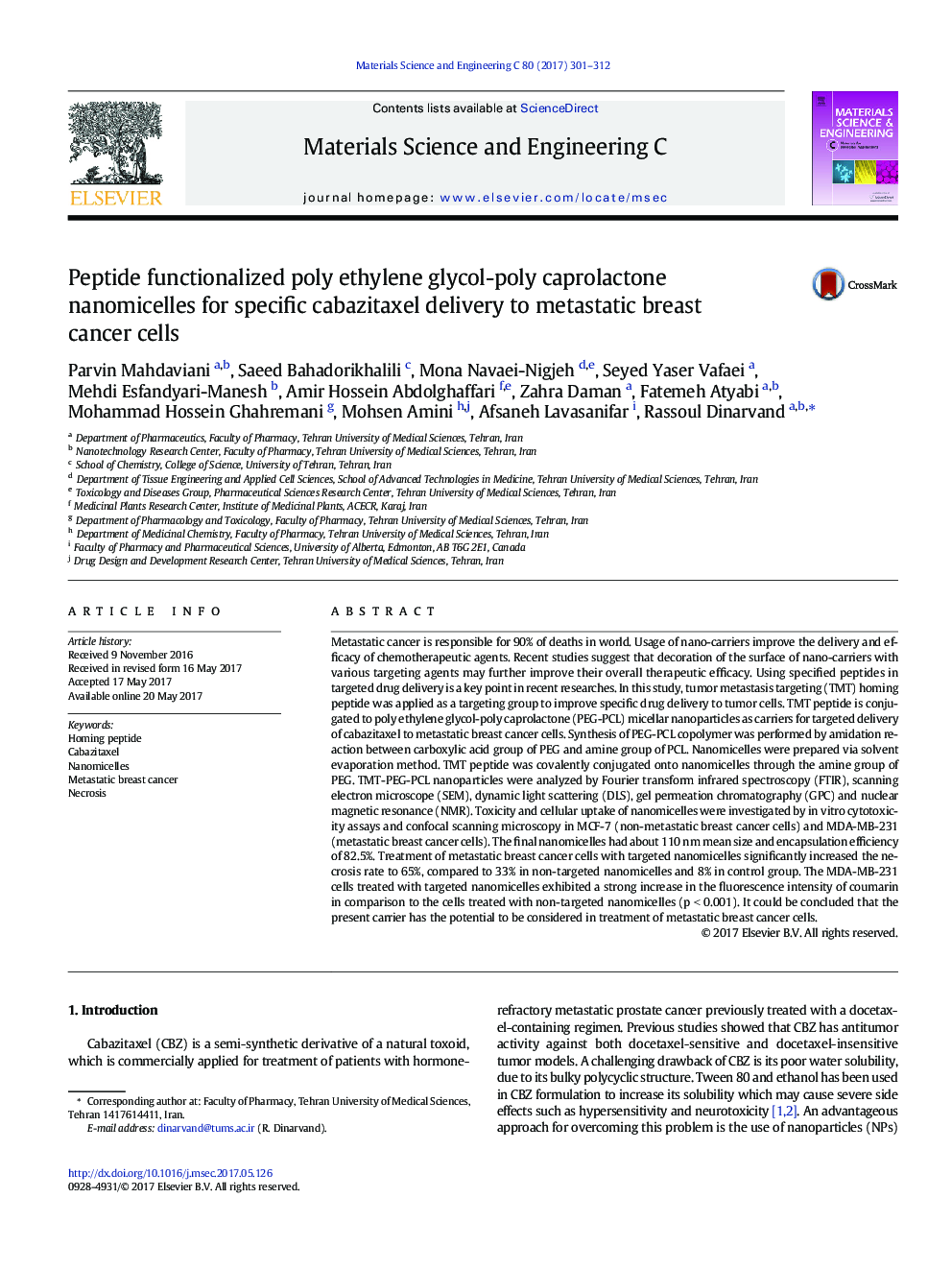| کد مقاله | کد نشریه | سال انتشار | مقاله انگلیسی | نسخه تمام متن |
|---|---|---|---|---|
| 5434323 | 1509141 | 2017 | 12 صفحه PDF | دانلود رایگان |
- Cabazitaxel (CBZ) is a semi-synthetic derivative of a natural toxoid.
- Nanoparticles have unique characteristics which can lead to increase therapeutic index of chemotherapeutic drugs.
- Polymeric micelles are nano-sized copolymers that can be used for drug delivery in breast cancer chemotherapy.
- Tumor metastasis targeting could improve uptake of nanomicelles by highly metastatic breast tumor cells.
Metastatic cancer is responsible for 90% of deaths in world. Usage of nano-carriers improve the delivery and efficacy of chemotherapeutic agents. Recent studies suggest that decoration of the surface of nano-carriers with various targeting agents may further improve their overall therapeutic efficacy. Using specified peptides in targeted drug delivery is a key point in recent researches. In this study, tumor metastasis targeting (TMT) homing peptide was applied as a targeting group to improve specific drug delivery to tumor cells. TMT peptide is conjugated to poly ethylene glycol-poly caprolactone (PEG-PCL) micellar nanoparticles as carriers for targeted delivery of cabazitaxel to metastatic breast cancer cells. Synthesis of PEG-PCL copolymer was performed by amidation reaction between carboxylic acid group of PEG and amine group of PCL. Nanomicelles were prepared via solvent evaporation method. TMT peptide was covalently conjugated onto nanomicelles through the amine group of PEG. TMT-PEG-PCL nanoparticles were analyzed by Fourier transform infrared spectroscopy (FTIR), scanning electron microscope (SEM), dynamic light scattering (DLS), gel permeation chromatography (GPC) and nuclear magnetic resonance (NMR). Toxicity and cellular uptake of nanomicelles were investigated by in vitro cytotoxicity assays and confocal scanning microscopy in MCF-7 (non-metastatic breast cancer cells) and MDA-MB-231 (metastatic breast cancer cells). The final nanomicelles had about 110 nm mean size and encapsulation efficiency of 82.5%. Treatment of metastatic breast cancer cells with targeted nanomicelles significantly increased the necrosis rate to 65%, compared to 33% in non-targeted nanomicelles and 8% in control group. The MDA-MB-231 cells treated with targeted nanomicelles exhibited a strong increase in the fluorescence intensity of coumarin in comparison to the cells treated with non-targeted nanomicelles (p < 0.001). It could be concluded that the present carrier has the potential to be considered in treatment of metastatic breast cancer cells.
383
Journal: Materials Science and Engineering: C - Volume 80, 1 November 2017, Pages 301-312
